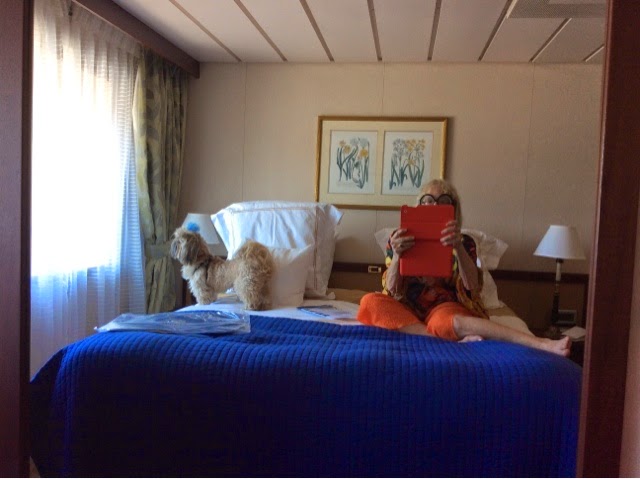That's what it was when Horton arrived. He had $1500 in his pocket and had planned to buy land in San Francisco, but he was too late. Try San Diego, they told him. Lots of land there. But the harbor is only seven feet deep. Still, Horton thought he saw potential. The climate was wonderful. So he bought San Diego, all of it. It cost $270.
 Horton dredged the harbor. People came. Among them were Babcock and Story, who bought Coronado Island and built the Hotel del Coronado, for the Idle Rich. They were railroad men, and they'd never built anything like a hotel, nor had the 300 Chinese workers they imported from San Francisco. But eleven months and $100,000 later, the Hotel del Coronado up and running. The Idle Rich loved it. Things went well until the financial crises of the '90s, but then along came John Spreckels, who bailed out the struggling hotel and ended up owning it.
Horton dredged the harbor. People came. Among them were Babcock and Story, who bought Coronado Island and built the Hotel del Coronado, for the Idle Rich. They were railroad men, and they'd never built anything like a hotel, nor had the 300 Chinese workers they imported from San Francisco. But eleven months and $100,000 later, the Hotel del Coronado up and running. The Idle Rich loved it. Things went well until the financial crises of the '90s, but then along came John Spreckels, who bailed out the struggling hotel and ended up owning it.So off we go on our walk, Xingxing prancing happily and thrilled to be outdoors and walking on pavements that don't burn his feet. One day we're in Scottsdale, the next day we're in Coronado. Does this seem like magic to him? Or does he think I've somehow organized it? I guess in a way, I have.
The best part of this holiday is the ability to be outdoors. We visit the Hotel del Coronado and see the tree Marilyn Monroe stood under in Some Like It Hot, which was filmed here. We walk along the beachfront to the other Spreckels mansion, the beach house. This is where the little boy was killed and his Burmese nanny subsequently committed suicide by tying her legs together, tying her hands behind her back, putting a noose over her head and jumping over a balustrade. The house is currently for sale. Price tag: $18 million. Don't know if the notoriety raised the price, or lowered it. We live in strange times.
 I need to say that if you are ever in Coronado, this history walk is one of the best I've ever done. Nancy is tremendously knowledgeable, but it's her ability to tell intimate little anecdotes that really brings it all alive. You don't have to be staying at the Glorietta Bay Inn to participate. So if you're in the area and you like history served up with spice, call the front desk at Glorietta and check it out.
I need to say that if you are ever in Coronado, this history walk is one of the best I've ever done. Nancy is tremendously knowledgeable, but it's her ability to tell intimate little anecdotes that really brings it all alive. You don't have to be staying at the Glorietta Bay Inn to participate. So if you're in the area and you like history served up with spice, call the front desk at Glorietta and check it out.After the walk, Xingxing and I have lunch at Vigilucci's, homemade pasta with shrimp and garlic. And wonderful bread. When we eat out, that's Xingxing's favorite thing -- bread and butter. But not at home. Not anywhere except restaurants.
















































